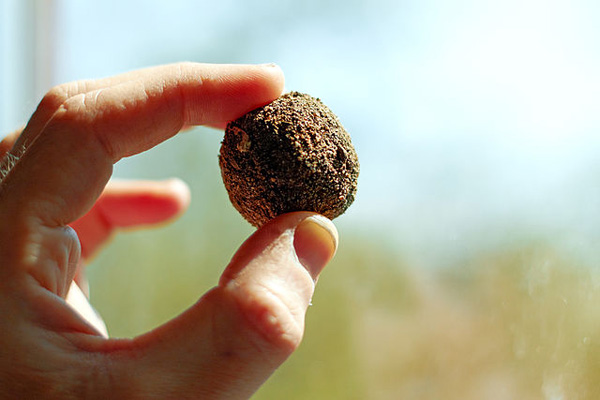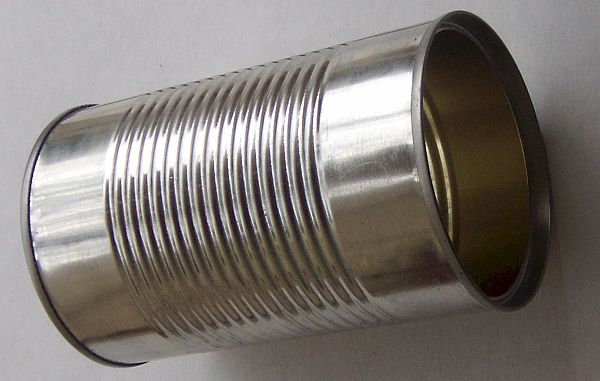
The seed bomb is an important part of the arsenal of Guerrilla gardeners all over the world. You too can use it to transform empty plots of land into green habitats of flowers and birds. If you’re afraid that the authorities wouldn’t approve of you digging up the sides of roads in cities, use the seed bomb. Or convert inaccessible strips of clay by the side of the road into green havens for tiny living things. All without burning a hole in your pocket. These seed bombs can also cover a large area. They are organic, easy to make and you can make many at a time, and some of them are sure to sprout and turn into oases in urban concrete jungles.
How it works:
Before we look at the steps to build a seed bomb, let’s look at how the seed bomb works. It is a dried ball of clay with compost and seeds inside it. The clay protects the seeds from the birds and insects that eat them. The compost fertilizes the seeds and increases their chances of germinating. The seeds can remain dormant inside the bomb for months without moisture. When they are watered or when the rains come they will break through the shell of clay and lodge roots into the ground. Then all you have to do is wait and watch as they grow taller and attract birds and bees.
Difficulty Level: Easy, any beginner can do it.
Time Required: Not more than about 15 minutes for the rolling of each bomb and a day for drying.
Resources Required:
- Clay, from your area, or if you live in an area surrounded by hard concrete unrelieved by clay, then you can buy Crayola Air Dry clay that will protect your seeds from seed-loving animals and insects.
- Water, for making clay pliable
- Seeds, these can be any seeds that will grow well in your area. Buy a mixture of seeds from local flowers and plants.
- Compost
- A large, flat surface
Estimated Cost: Low. Definitely much lower than buying saplings at the nursery. You can save money on the compost by making some of your own with earthworm castings from your garden.
Instructions:
1. First, cut a very thin piece of clay.
2. Next, place it on a flat surface and press down to flatten, not paper thin and not too thick.
3. Cut clay into a piece about 2 and a half inches by 2 inches.
4. Sprinkle fine compost on the clay.
5. Add about 2 seeds to it.
6. Add a few drops of water. Not too much, just enough to make the compost stick to the bomb.
7. Scrape the clay off with your fingers and roll into a bomb. Make sure the seeds don’t fall out.
8. For a better bomb, put it in a pot of compost and rub the compost on the bomb. Repeat this a few times.
9. Air-dry the seed bomb. Your bomb is done!
10. Carry a number of these in your pockets and throw them into vacant plots. Water them yourselves or wait for the rains!
Frequently Asked Questions:
1. What kinds of seeds can I grow in my area?
If you don’t know which plants grow best in your area, check with the local Nature Conservancies or your state’s department of natural resources.
2. What compost can I use?
You can get compost at the home and outdoors section of department stores or make some yourself from vegetable waste mixed with clay or earthworm casings.
3. Would it be helpful to pre-sprout the seeds?
No, they’ll be crushed when the bomb is being rolled.
Quick tips:
- Use a takeaway food tub lid or a yogurt tub lid as your flat surface.
- The thinner the piece of clay is, the easier it is to form a ball.
- Dust the flat surface with powder or place some butter paper to prevent the clay from sticking.
- More compost increases the chances of seeds germination.
- Depending on the quality of seeds you are using, use less for good quality seeds and more for inferior seeds with less chances of germinating. Only some of the seeds in the bomb will sprout. You want to improve their chances.
Things to watch out for:
- It is very important to buy seeds native to your area. That way, they won’t cause an imbalance in the habitat of the neighborhood birds and insects by crowding out other plants and harming the environment instead of doing good.
- Also, make sure that the compost is free of weed seeds. You don’t want the weeds to overrun the land and eat up all the resources the other plants need.




